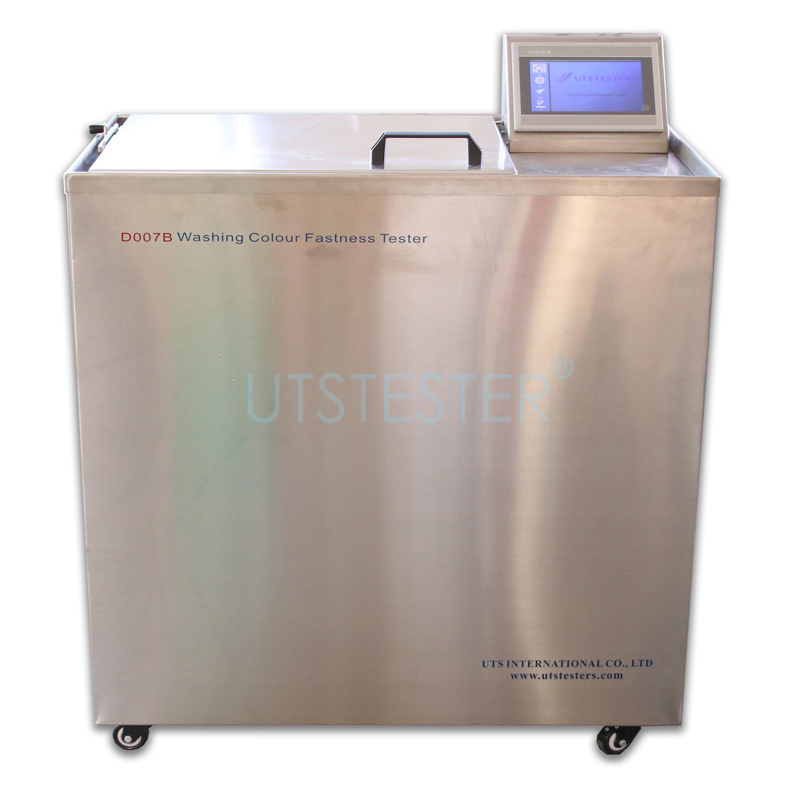 +86 152 6060 5085
+86 152 6060 5085
 +86 152 6060 5085
+86 152 6060 5085
Blog
Catalog
Latest Blog
The main factor affecting the color fastness to moisture
1, the type of fabric, fabric structure
2, textile pretreatment, such as desizing, boiling, bleaching, mercerizing, etc
3, the choice of textile dyes, as well as the process, temperature, time control is strict
4. Whether the selection and use of additives are correct
5, textile post-treatment, etc.
Improvements can be made from the following points
1. According to the analysis of textile materials, general chemical fiber fabrics have better color fastness to wet friction than natural fabrics such as cotton, and thin fabric is better than heavy fabric. Therefore, in textile processing, each process should be treated evenly, in order to improve the absorbability of the fiber and the reactivity of the dye or adsorption fixation, so that the dye is fully dyed. In the process, the requirements of strict control, such as auxiliaries must be correctly selected and used. In order to improve the color fastness of textile products to moisture, full soaps can be carried out in the textile post-treatment. For example, polyester fibers dyed with disperse dyes will migrate to the surface of the fibers after high temperature setting, resulting in decreased friction fastness. In view of this situation, adding color fixing agent or smoothing agent can improve the color fastness to friction to a certain extent.
2. When choosing dyes, choose dyes with good lifting and evenness, which are conducive to the penetration and diffusion of dyes and can improve the wet rubbing fastness to a certain extent. Dyes should have certain water solubility and directness, water-soluble groups can not be too much, otherwise it will affect the wet rubbing fastness behind. And directness should also choose medium as the best. The selected dyes should not be too direct, in general, should be greater than 70%.
3. Cotton and other natural fabrics have relatively poor color fastness to wet friction, so the grey fabric with uniform yarn count and smooth surface should be selected for cotton fabric. If pretreatment is required, an efficient pretreatment agent should be used.
4, reactive dye dyeing water should be as far as possible to use soft water or deionized water, in order to reduce the influence of calcium and magnesium plasma in the water on the dye, so as to improve the absorption of dye fiber, dye in the fiber molecules more stable.
5, the use of high efficiency fixing agent, the selected fixing agent should be able to form a compound between the dye and the fiber link, in the reaction with the dye, and the cellulose fiber reaction crosslinking, so that the dye and fiber can be closely and firmly linked together, strengthen the combination of dye and fiber, prevent dye from falling off the fiber or moving to the fiber surface, to avoid the decline in dyeing fastness.
6, the use of special additives, such as deepening agent to finish the dyed fabric, can reduce the amount of dye and obtain deep color effect, while improving the color fastness to wet friction.
7. Pay attention to the pH value of the cloth surface after dyeing. In general, the dyeing process of deep and dense cotton fabric uses a higher amount of alkali, and then the washing, soap washing and neutralization should be strengthened. Therefore, alkali should not be carried on the fabric, so as to avoid the hydrolysis of dye after dyeing, resulting in the decrease of wet rubbing fastness. Generally, the pH value of cloth surface is controlled between 6.5 and 7.5, not more than 9 or less than 3.
8. Starting from the characteristics of the dyed cloth, the fabric is finished, such as enzymatic polishing treatment, so that the finish of the cloth is increased, the friction is reduced, and the color fastness to wet friction is improved.
9. The floating color on the fiber is extremely unfavorable to the color fastness to wet friction. The dyed fabric with deep and dense reactive dyes should be soaked twice. It has been tested that the dyed fabric can be washed with anti-fouling detergent (dosage 2-3g/L, treatment at 95℃ for 10min), and the wet rubbing fastness can reach level 3. In the actual mass production, often occur many conditions, such as steam pressure fluctuations, so that the temperature in the specified time is not high; When the operation of the vehicle is wrong or the equipment fails suddenly, the scheduled procedure is deviated, the color difference is added after the dye and chemical material, and the process is changed, which leads to the color fastness difference (including cylinder difference). For some mechanical equipment and dye varieties, alkali and other chemical agents, in the mass production to make the cleaning after dyeing is very practical, so it should be reasonable choice.
10. Because reactive dye dyeing is difficult to remove clean float color, appropriate stripping agent can be used after soap cooking to remove float color, so that the fabric dye and fiber after removing float color form a complete body, so as to improve its wet rubbing color fastness.
11. For the covalent bond formed by reactive dyes and fibers may become unstable or even broken under acid or alkali conditions, a soft, strong and water-resistant film can be formed on its surface to improve the wet friction fastness with its water resistance and soft smoothness. Sol Gel method is an important method to prepare inorganic film, through the sol-gel technology on the fabric to form different components of the film, can improve the wear resistance of the fabric and water and oil resistance, can improve the wet rubbing fastness to a certain extent. However, it has a strong influence on its hand feel.

Email: hello@utstesters.com
Direct: + 86 152 6060 5085
Tel: +86-596-7686689
Web: www.utstesters.com